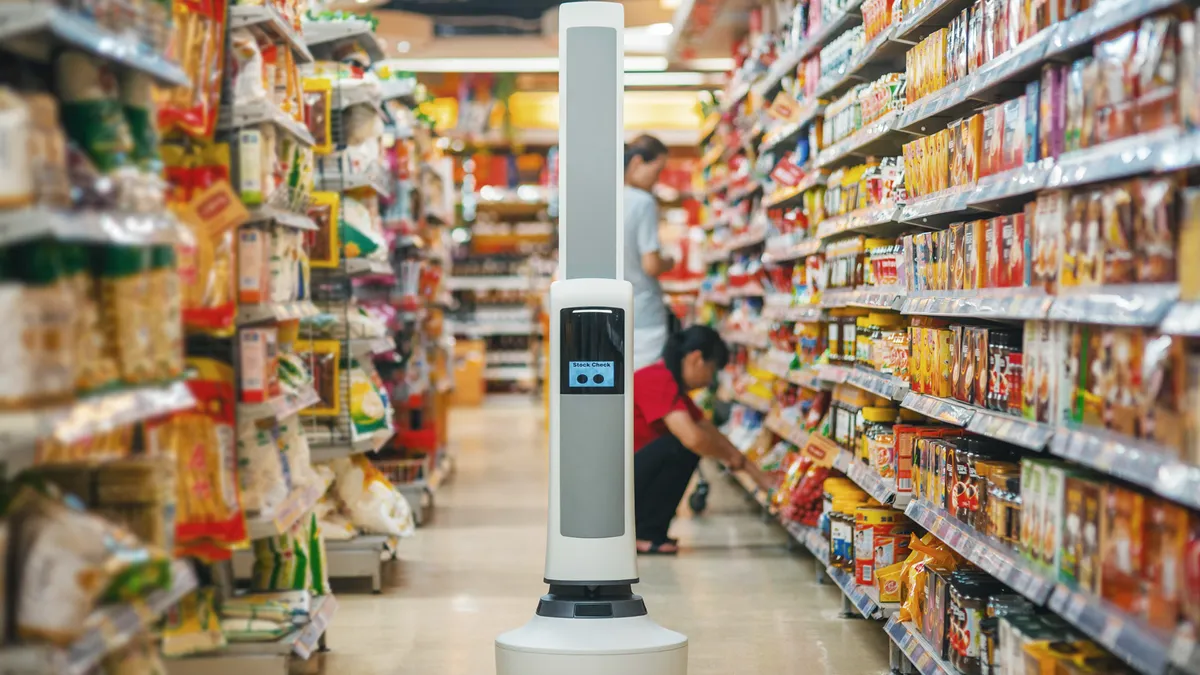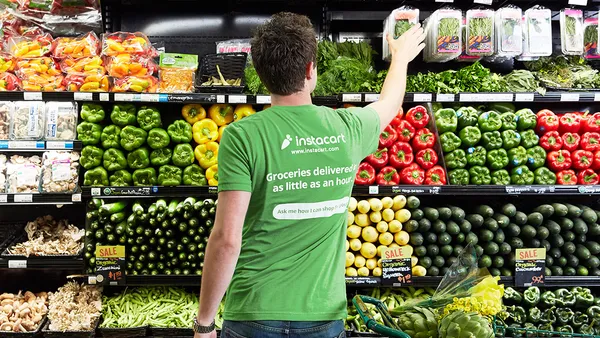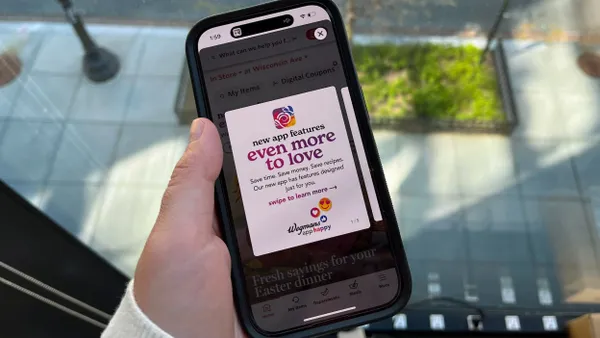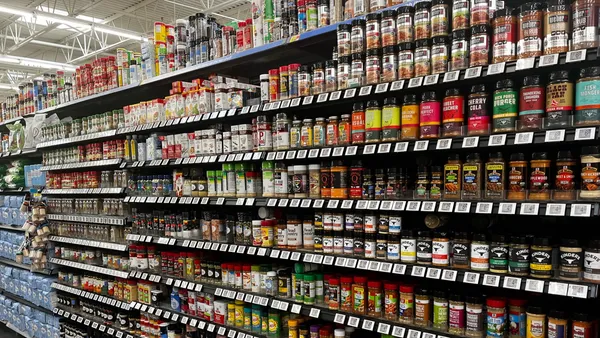Dive Brief:
- Giant Eagle is the latest grocer to pilot in-store robots that check for pricing accuracy, out-of-stocks and other shelf-level data, according to a press release emailed to Grocery Dive. The grocer is currently testing Tally, the aisle-roaming bot built by San Francisco-based Simbe Robotics, at stores in Akron, Ohio; Cleveland and Pittsburgh.
- Tally travels up and down store aisles multiple times per day and sends data reports to teams every 30 minutes that detail stock levels and analyze product performance. In all, Tally scans around 35,000 products across center store and health and beauty care departments.
- Simbe Robotics is in the test phase with a dozen retailers, including Schnucks, which has Tally robots in 15 stores. Various other retailers have begun rolling out in-store robots, including Ahold Delhaize, which recently announced a 500-store rollout, and Walmart, which plans to implement hundreds of robots in its stores that perform a variety of tasks, from scrubbing floors to auditing shelves.
Dive Insight:
In an interview with Grocery Dive, Simbe Robotics CEO Brad Bogolea said Giant Eagle first expressed interest in the firm's technology in late 2015. The retailer, which Bogolea said was his hometown grocer growing up in western Pennsylvania, began quietly piloting Tally robots in stores, gradually expanding to the three markets where they operate currently. He declined to name how many Giant Eagle stores currently have a Tally in them.
Beyond auditing shelves for pricing accuracy and making sure all those cereal boxes and shampoo bottles are in-stock and facing the correct direction, Tally benchmarks product performance in ways that can help retailers become better category managers, said Bogolea. Giant Eagle has embraced this aspect of the technology, he said, and has been proactive about involving all of its store employees in the pilot, sending data directly to workers' handheld devices.
Grocers across the industry are rolling out robots in an effort to save money and boost their effectiveness in carrying out the rote, repeatable tasks that are prone to human error. Some, like Giant Eagle and Schnucks, are tiptoeing into robotics while others, like Walmart and Ahold Delhaize, are utilizing their scale and considerable expertise to quickly scale it.
Simbe Robotics is currently in testing mode with a dozen retailers and has others in the early stages of adoption, said Bogolea. The firm is trialing Tally in Asia and recently landed in its first European store, a Géant Casino hypermarket in France. Over the next five years, Bogolea said he hopes to put Simbe robots in 25,000 retail stores.
The widespread adoption of robots in U.S. supermarkets isn’t guaranteed, however. Many cash-strapped retailers will struggle to put a pricey bot in a single store, let alone many locations. Retailers may look to spend their money on initiatives that will generate more immediate returns, like promotions and store remodels.
"We don't want to put it in place just because it's a robot. It has to provide benefit," Tim Brady, manager of deployment and strategic initiatives at Giant Food Stores who has overseen the deployment of Marty during the last year, recently told Grocery Dive.
There's also the challenge of integrating robots into the store environment. Unlike warehouse automation and other behind-the-scenes processes, robots like Tally and Marty have to deal with more variables and potential mishaps. A recent trip to a Giant store in Carlisle, Pennsylvania found Marty struggling to move around on wet floors created by all the melting snow customers tracked in.
Retailers and technology firms also have to factor in shoppers, who aren’t used to encountering towering robots while filling their carts. Bogolea said Simbe spent a lot of time thinking about customer experience. That ultimately led to the many safeguards that keep Tally from running into people, along with the robots softer features, including expressive eyes and the various (and otherwise function-less) beeps and boops it emits to let people know it's around.
"We're one of the first companies to put robots in places where people go every week," Bogolea said. "Most people haven't interacted with robots much past their vacuum cleaner."













